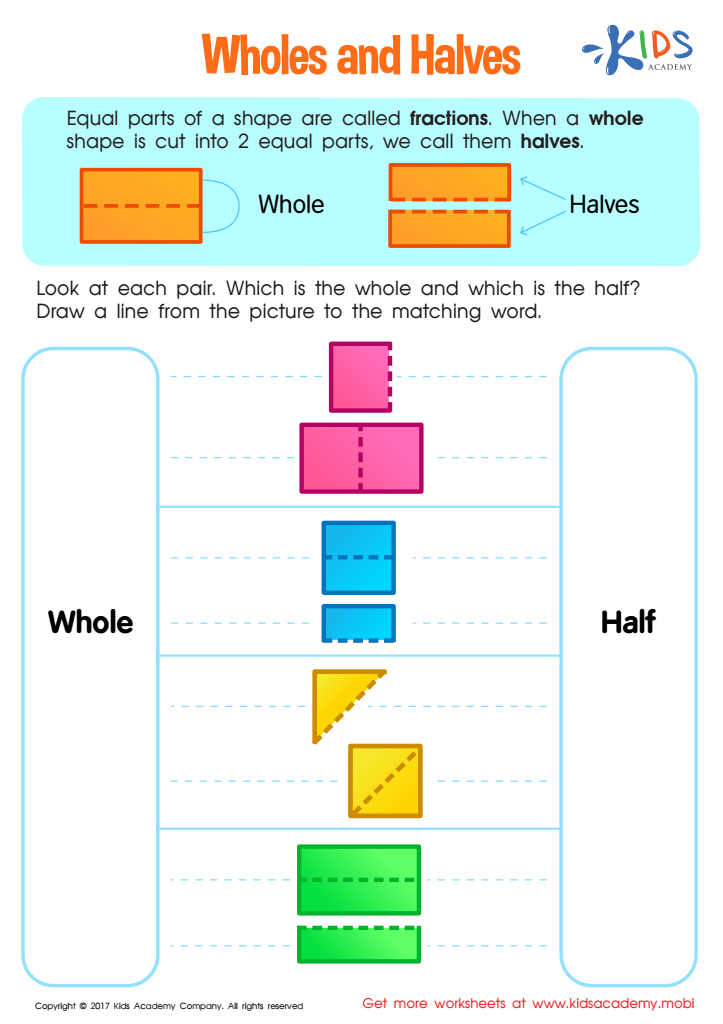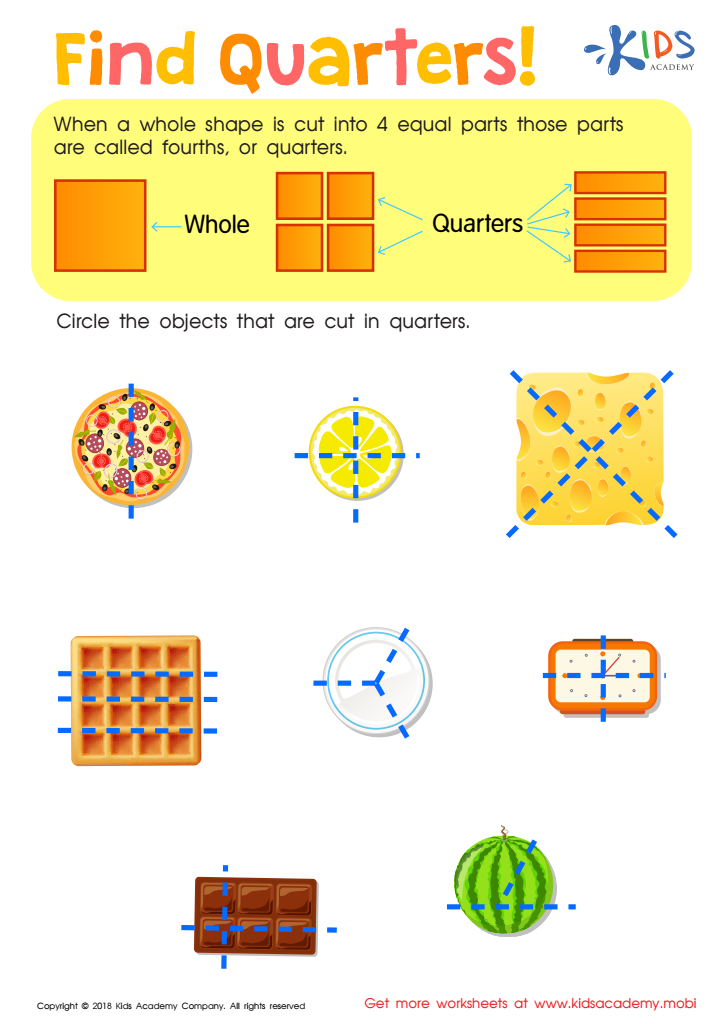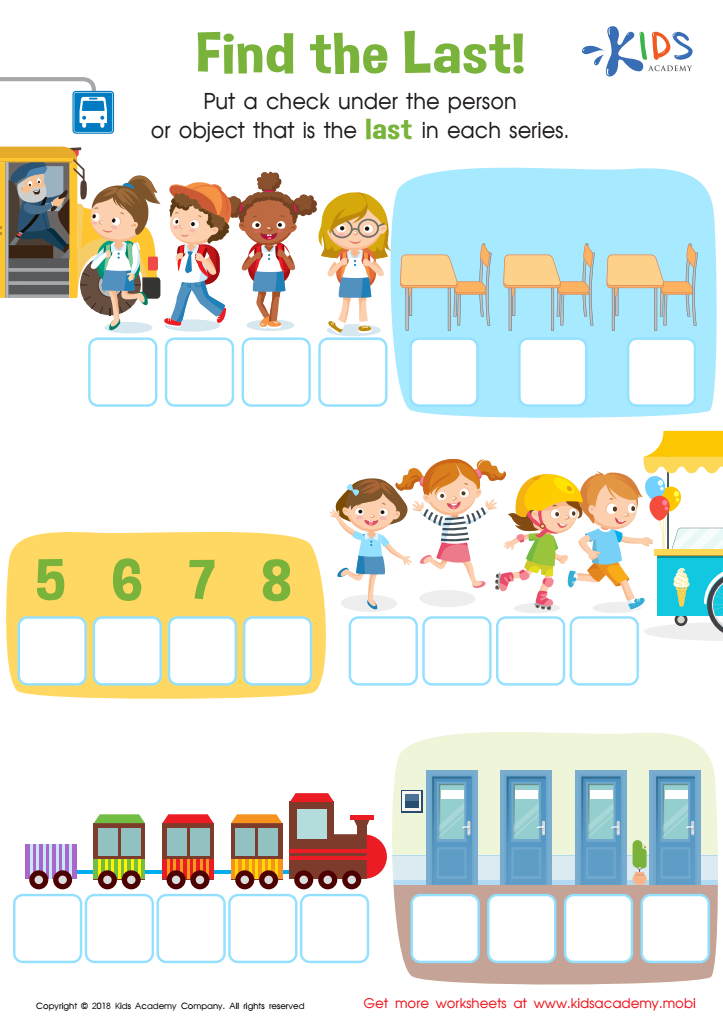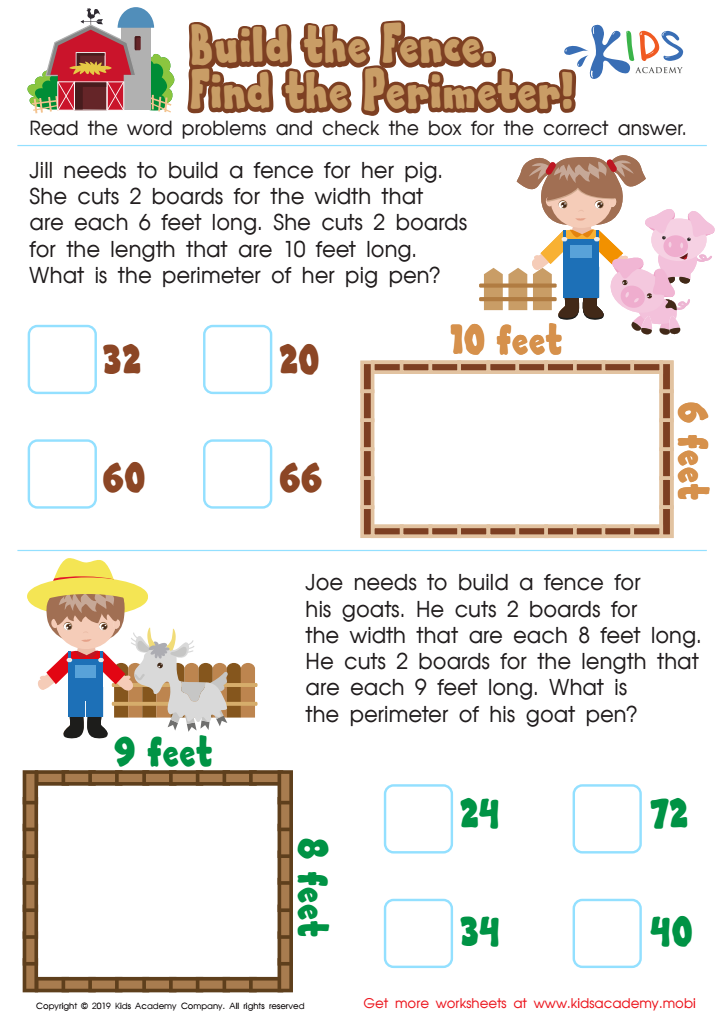Basic Math Skills Normal Geometry Worksheets for Ages 6-8
5 filtered results
-
From - To
Discover our engaging Basic Math Skills Normal Geometry Worksheets, specifically designed for children ages 6-8! These worksheets create a fun and interactive way for young learners to enhance their understanding of geometry concepts. Our carefully crafted activities cover essential skills such as shape recognition, basic spatial reasoning, and visualization. With colorful illustrations and age-appropriate tasks, these worksheets capture children’s attention while promoting essential math skills. Perfect for classroom use or at-home learning, these resources help build a strong mathematical foundation. Explore the full suite online and empower your child with confidence in their math abilities! Start learning through play today!


Wholes and Halves Worksheet


Going up or Down? Worksheet


Find Quarters Worksheet


Find the Last! Worksheet


Build the Fence, Find the Perimeter Worksheet
Developing basic math skills, particularly in geometry, is crucial for children aged 6-8 as it lays the foundation for future mathematical understanding. During this developmental stage, children are naturally curious and eager to learn, making it an ideal time to introduce geometric concepts. Understanding shapes, spatial relationships, and measurement not only enhances problem-solving abilities but also promotes critical thinking skills.
Parents and teachers should care about this because geometry fosters real-world applications. Children learn to recognize shapes in their environment, understand symmetry, and visualize spatial relationships, which are important skills for navigation, art, and even science. Engaging students in activities like building with blocks or identifying patterns sharpen their cognitive abilities and increase their confidence in math.
Moreover, mastering basic geometry can lead to a deeper appreciation for math as a whole, thus encouraging lifelong learning. In an increasingly data-driven world, offering children solid foundational skills is essential for their academic success and future career prospects. Therefore, prioritizing basic math skills, including normal geometry, supports holistic development, paving the way for proficiency in more advanced math concepts as they progress in their education.
 Assign to My Students
Assign to My Students















